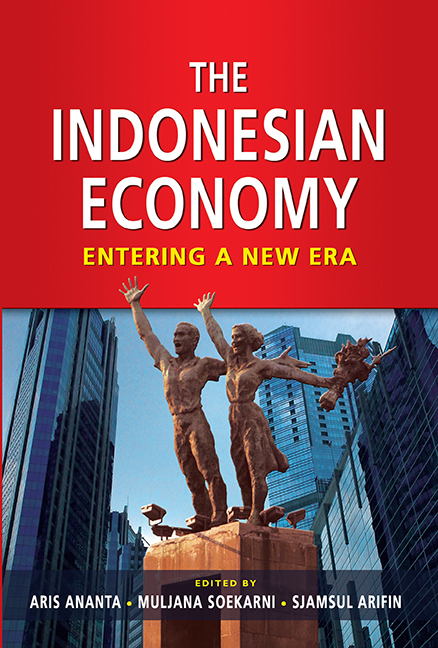Book contents
- Frontmatter
- Contents
- List of Tables
- List of Figures
- Message from the Deputy Governor of Bank Indonesia
- Message from the Director of the Institute of Southeast Asian Studies
- Foreword
- Preface
- Contributors
- PART I INTRODUCTION
- PART II MONETARY AND FISCAL POLICIES
- 3 The Dynamics of Monetary Policy
- 4 The Financial System: Balancing Financial Stability and Economic Growth
- 5 Economic Crisis and Fiscal Policy Management
- 6 Understanding the Role of Fiscal Stimulus in Maintaining Economic Resilience
- PART III DOMESTIC ECONOMY
- PART IV SEARCH FOR NEW PARADIGMS
- Index
6 - Understanding the Role of Fiscal Stimulus in Maintaining Economic Resilience
from PART II - MONETARY AND FISCAL POLICIES
Published online by Cambridge University Press: 21 October 2015
- Frontmatter
- Contents
- List of Tables
- List of Figures
- Message from the Deputy Governor of Bank Indonesia
- Message from the Director of the Institute of Southeast Asian Studies
- Foreword
- Preface
- Contributors
- PART I INTRODUCTION
- PART II MONETARY AND FISCAL POLICIES
- 3 The Dynamics of Monetary Policy
- 4 The Financial System: Balancing Financial Stability and Economic Growth
- 5 Economic Crisis and Fiscal Policy Management
- 6 Understanding the Role of Fiscal Stimulus in Maintaining Economic Resilience
- PART III DOMESTIC ECONOMY
- PART IV SEARCH FOR NEW PARADIGMS
- Index
Summary
EXITING THE 2008–09 CRISIS: A POLICY-DRIVEN RECOVERY
The 2007–08 global financial turbulence originated from the subprime mortgage crisis in the United States which had spread across both developed and developing countries. This financial turmoil not only touched the financial sector, but also the real sector as well. In the financial sector, global financial institutions reported a series of losses; thus, confidence in financial institutions eroded and the level of granted credit dropped significantly. Meanwhile, in the real sector, world trade volume and economic growth dropped drastically and unemployment level and poverty rates rose sharply. The IMF had downgraded the forecast for world economic growth 2009 from 2.2 per cent in November 2008 to 0.5 per cent in January 2009, and to –1.4 per cent in July 2009. However in its October 2010 update, the IMF announced the actual growth rate in 2009 to be –0.6 per cent (International Monetary Fund 2010).
World output and trade started to improve in the second half of 2009. Confidence significantly bounced back up in both the real and financial sectors as extraordinary policy responses have prevented another Great Depression. Governments and central banks introduced a number of measures to deal with liquidity and solvency problems. Central banks eased monetary policy by reducing interest rates to unprecedented levels, with some interest rates slashed down close to zero to offset the increase in private sector premium and to prevent a further decline in economic activity. In spite of these policies, credit markets remained very tight, and economic growth and employment in many countries continued to weaken. With limited room for further stimulus through monetary policy, attention switched to the fiscal side, such as improving direct fiscal spending and temporarily cutting taxes to push domestic aggregate demand. Therefore, following the G-20 consensus, the Indonesian economy maintained its resilience throughout the turbulence by cutting interest rates and running a fiscal stimulus package.
Notably, the governments in many countries used fiscal stimulus package to prevent their economies from falling into recession. Developed countries, such as the United States, the United Kingdom, and Germany introduced such packages for the real sector to push their domestic aggregate demand. Asian countries, such as China and India, also introduced fiscal stimulus support. Theirs consisted of an increase in infrastructure expenditure, along with a simultaneous tax cut.
- Type
- Chapter
- Information
- The Indonesian EconomyEntering a New Era, pp. 159 - 190Publisher: ISEAS–Yusof Ishak InstitutePrint publication year: 2011



